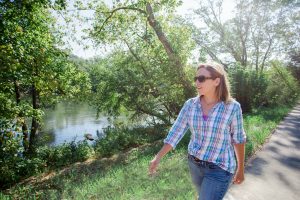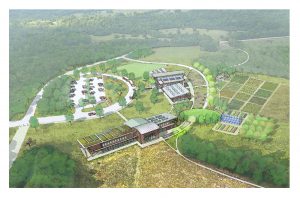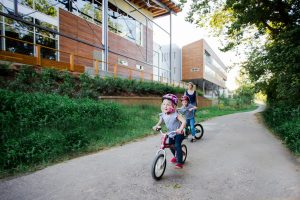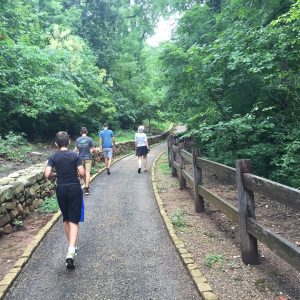Four Principles to be on the Cutting Edge
The most prominent national recreation trend to emerge in the past 10 years, is the shift away from organized sports-oriented recreation to nature-based recreation. Demand for trails, wildlife viewing, and other nature based recreation activities have nearly doubled in the past 20 years. In a poll by the National Recreation and Park Association, respondents listed being close to family and nature as well as being physically active as their top three reasons for visiting a park. Playing sports and more active recreation was much lower on the list.

This shift is where Equinox has found its niche. At the center our mission and expertise is nature-based design that interweaves the needs of the natural and human world. Along the way we, in partner with clients, have gained some critical knowledge on how to stay on the cutting edge of the design and implementation of nature-based amenities. Here are four principles we think you might find useful, and which ensure higher chances for funding, increased advocacy for, and award-winning potential for your project.
1) Your Greatest Asset Is What You Most Feature and Most Protect
Nature-based recreation is dependent on the quality of experience users have in the natural environment. Protecting the integrity of this environment should occur in early planning phases by undergoing a natural resource inventory that identifies rare or endangered species and intact and valuable habitats. This should also include an inventory of historical features. At Equinox, we identify conservation zones where higher use impacts are avoided. When an important but sensitive site is the main feature, low-impact and sustainable design principles should be engaged.
Featured Project: Willow Pond at the North Carolina Arboretum 
Originally intended as a detention pond during construction, this pond is now home for a variety of fauna, but specifically the mole salamander, a designated species of concern in the state of NC. Equinox is currently working with the Arboretum to enhance the habitat and pond, increase stormwater control measures, and improve public access for environmental education. The balance will be in enhancing the habitat and making it a major amenity.
2) Innovation Always
When planning for nature-based recreation, determine what sets you apart, and capitalize on that. Innovative ideas engage more and diverse users, attract funders, and add to your community identity.
Featured Project: Yanahli Park, Nature Center, and Magnet School 
A visionary idea has emerged from the collaboration of a community in Middle Tennessee. Led my Maury County Parks and Recreation, the community is envisioning a nature based park, but what sets it apart is the inclusion of a public magnet school that has curriculum is based around nature based learning, and the operation of a nature center that is led by students.
3) Provide For All Ages and Abilities
Nature-based recreation by its “nature” allows for the greatest diversity of users, from your 2-year old who is hunting for bugs, to the marathon runner in-training. Good design ensures multi-use and multi-needs are met.
 French Broad Greenway at New Belgium
French Broad Greenway at New Belgium
Greenways are in top demand by the public nationally. They provide a recreation amenity for all users and can double as a transportation corridor. Design, especially at the intersection of roads, is critical to ensure safety for users of all ages and abilities.
4) Collaborations Are Key!
Another national trend is the increasing shift towards collaboration between multiple partners, allowing for an increased capacity of facilities or services.
Featured Project: Knoxville’s Urban Wilderness 
As one of the most exemplary collaborations we’ve seen nationally, the Urban Wilderness the Urban Wilderness currently is a fabric of connected parks, open space, and trails with over 1,000 forested acres, 50-miles of multi-purpose in the heart of Knoxville. Its success can be credited to collaborations which include non-profits, county and city government, trail clubs, and the application of these four principles: an innovative vision, a diversity of facilities for a diversity of users, and the protection of a huge patchwork of environmentally sensitive habitat.
